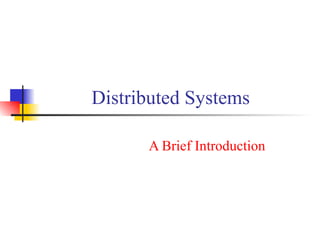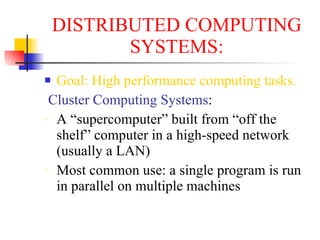Distributed systems allow independent computers to appear as a single coherent system by connecting them through a middleware layer. They provide advantages like increased reliability, scalability, and sharing of resources. Key goals of distributed systems include resource sharing, openness, transparency, and concurrency. Common types are distributed computing systems, distributed information systems, and distributed pervasive systems.





























